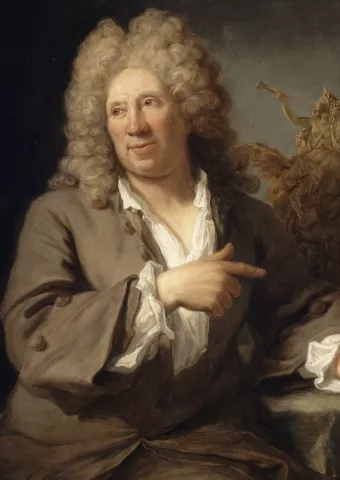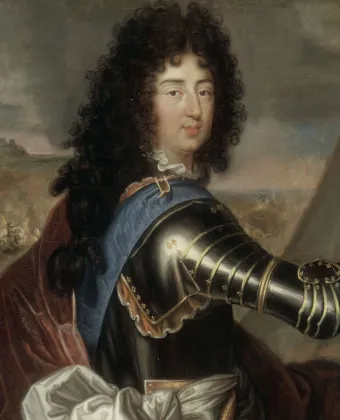Originally from Lyon, Coysevox began to work on commissions for Versailles in 1678, when he decorated the Ambassadors’ Staircase, followed by the Hall of Mirrors and the Marble Courtyard. For the War Room he created the relief work of Louis XIV triumphant. This sculpture is a masterpiece of French Baroque work and testifies to the artist’s liberty of creation and great skill. His Baroque style and his liking for fine materials can also be seen in France triumphant in the Triumphal Arch Grove, which is made entirely of gilded lead. He also created the Vase of War (1685) for the Water Parterre of the Palace, also on a war theme.
The marble replicas from Antiquity of Crouching Venus and Nymph with a shell for the North Parterre and Leto’s Parterre are more serene. Currently conserved in the Louvre, they have been replaced with marble or bronze copies. The group of Castor and Pollux at the western entrance to the Royal Way was more ambitious. Coysevox aimed to show that he too could rival the calm Classicism of Girardon. He demonstrated this once again in the Water Parterre with the innovative prone figures of The Garonne and The Dordogne.
Coysevox’s talents were also employed at Marly where, with his nephews the famous Coustou brothers, he made the figures of the Grand Waterfall, composed of Neptune, Amphitrite, the Seine and the Marne (Louvre), as well as the equestrian figures of Mercury and Renown for the drinking pool. These works, which were later moved to the entrance of the Tuileries, herald the rococo movement. The delicate figure of the Duchess of Burgundy as Diana (Versailles) also foreshadows the rococo style and demonstrates the sculptor’s interest in Antiquity and his liking for portraiture.
Anecdote
As official portrait sculptor to the king, Coysevox demonstrated undeniable talent compared with Girardon. He created a number of busts for the king and the Court, and thanks to his work the genre became remarkably successful in the 18th century.
Each piece testifies to his profound sense of psychology and resemblance, something which earned him commissions for a number of funerary monuments, the most famous of which are those for Mazarin at the Institut de France and Colbert in the church of Saint-Eustache. The artist worked tirelessly until the end of his days and capped his brilliant career with a final masterpiece: Louis XIV praying in the choir of Notre-Dame de Paris. Always at the service of the king!















